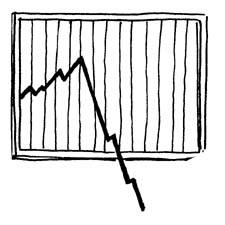Hello to the Age of Communication Economics
Since World War Two ended, the American economy has been heavily dependent on consumer economics. According to some economists, seventy percent of economic activity is based on shopping. Others argue the percentage is closer to 40%(see link to National Review article below).
Purchases of automobiles, clothing, furniture, houses, electronics, kept manufacturers here and abroad humming. As Europe and Asia recovered from the effects of a war that never reached the American continents, production in American factories geared up and sent goods all over the world.
Americans with good jobs bought lots of stuff. As they shopped, the economy grew. Production led to consumption. Even while the world recovered and production moved offshore, Americans kept buying. Gradually, the production economy became the consumption economy.
The consumer price index and consumer confidence measures are watched vigilantly for signs of discomfort among the populace. When consumers are uncomfortable, they don't spend money. When consumers don't spend money, the Market (the capitalization is deliberate) becomes nervous. When the Market gets nervous, stocks are sold. When stocks are sold, corporate values drop. This is bad, bad, bad for the economy.
Or so it has gone for over fifty years.
That dynamic is beginning to change. American workers are no longer employed in the manufacturing sector as they once were. Actual wages haven't grown. While prices have increased, net income has not. Inflation chews into available money.
The Consumer Price Index, in effect since 1914, is the gold standard for what goods and services cost. The Bureau of Labor Statistics of the United States Department of Labor defines the CPI as: "a measure of the average change over time in the prices paid by urban consumers for a market basket of consumer goods and services."
One of the uses for CPI is calculating inflation. Inflation has a profound effect on consumers. Unfortunately for the average American, calculating inflation using the Consumer Price Index ignores the two sectors that most affect consumers - food and fuel.
So while the rate of inflation might look good, American checkbooks do not.
Consumer economics, with heavy emphasis on luring shoppers, has always looked to the young for guidance. What young people are wearing, listening to, watching, driving is of paramount importance to opinion makers. What are the cool kids doing? That's the question Madison Avenue, the traditional advertising center of America, constantly asks.
What happens when the cool kids don't want a car? What happens when the cool kids are wearing old t-shirts and last year's jeans? What happens when the cool kids can't afford to buy a house (and furnish it) because their student loans are in first place in their financial lives? What happens when the cool kids are more interested in selfies, instagram, traveling around with uber and house sharing through airbnb?
What happens is that the consumption model begins breaking down.
Millenniums and Generation Xers are not the classic consumers. Their journey away from the economics of their elders is based in large part on what has been done to them. For many of them, college and post secondary education is not optional. The post high school good manufacturing jobs have moved to Asia and the Pacific Rim. Costs for that education in many cases is not matched by the jobs they are able to obtain when they graduate.
The younger generation lives virtually as their parents and grandparents never did. Communication is constant and constantly changing. From email to facebook to twitter to vimeo and instagram, the young use media as their elders used books, newspapers televisions and telephones.
The products this target audience is using is not being built by them or their peers. It may be designed in America (like Apple) but it is produced in China. The products are the vehicle to carry messages - lots and lots of messages.
Consumers have become communicators. Change is coming to the economy, to the Market, to Main Street.
The Age of the Consumer is over. The Age of the Communicator has begun. |







